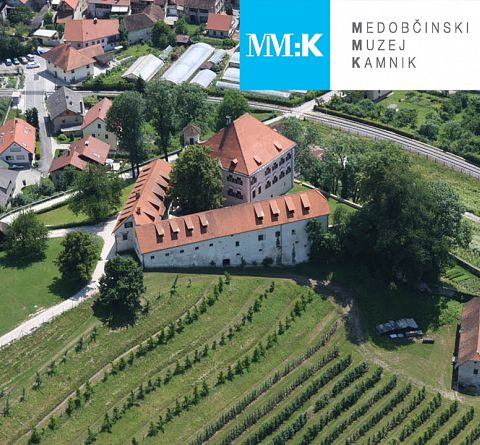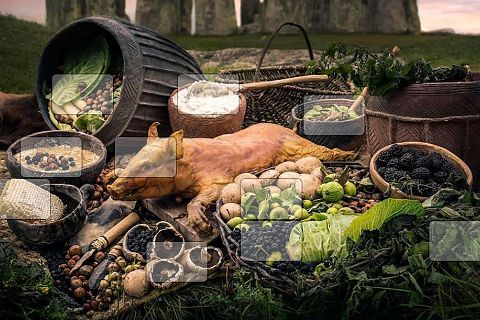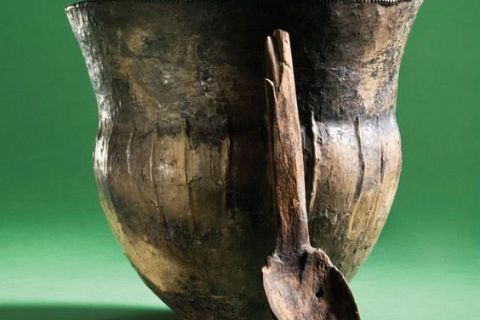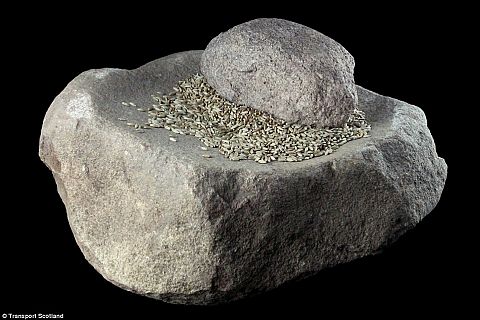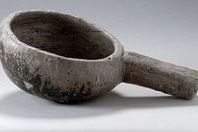Innovations in diet and life - Neolithic revolution
12,000 years ago, after the retreat of glaciers, the climate became warmer, living conditions improved. In the Middle East, in India, people start growing the first grains, domesticate the first animals. This allowed them a more permanent settlement and a different diet. The period after the new tools (neos – new, lithos – tool) is called the Neolithic.
Here these changes began somewhere in the second half of the 6th millennium BC. Animals, such as cows and goats, gave milk, and they were useful as working animals (for plowing or hauling), as well as a source of food. Some animals provided leather, wool, and manure. Among the first domesticated animals were dogs (in East Asia, about 15,000 years ago), sheep, goats, cattle, and pigs.
On the menus of the Neolithic inhabitants is also bread.
Even before the Neolithic revolution, man invented ceramics. One of the oldest earthenware was found in China (about 18,000 years ago). Then they started using ceramic dishes in Japan and 7,000 years ago in the Middle East, from where it spread throughout Europe.
The hand-made dish was followed by the invention of the potter’s wheel, which is attributed to the Mesopotamians (5,500 years ago). Since then, the production of ceramics has become larger and easier.
(Taken from: Bellis, Mary. “The Invention of the Wheel.” Feb. 11, 2021, thoughtco.com/the-invention-of-the-wheel-1992669; http://cookit.e2bn.org/historycookbook)



